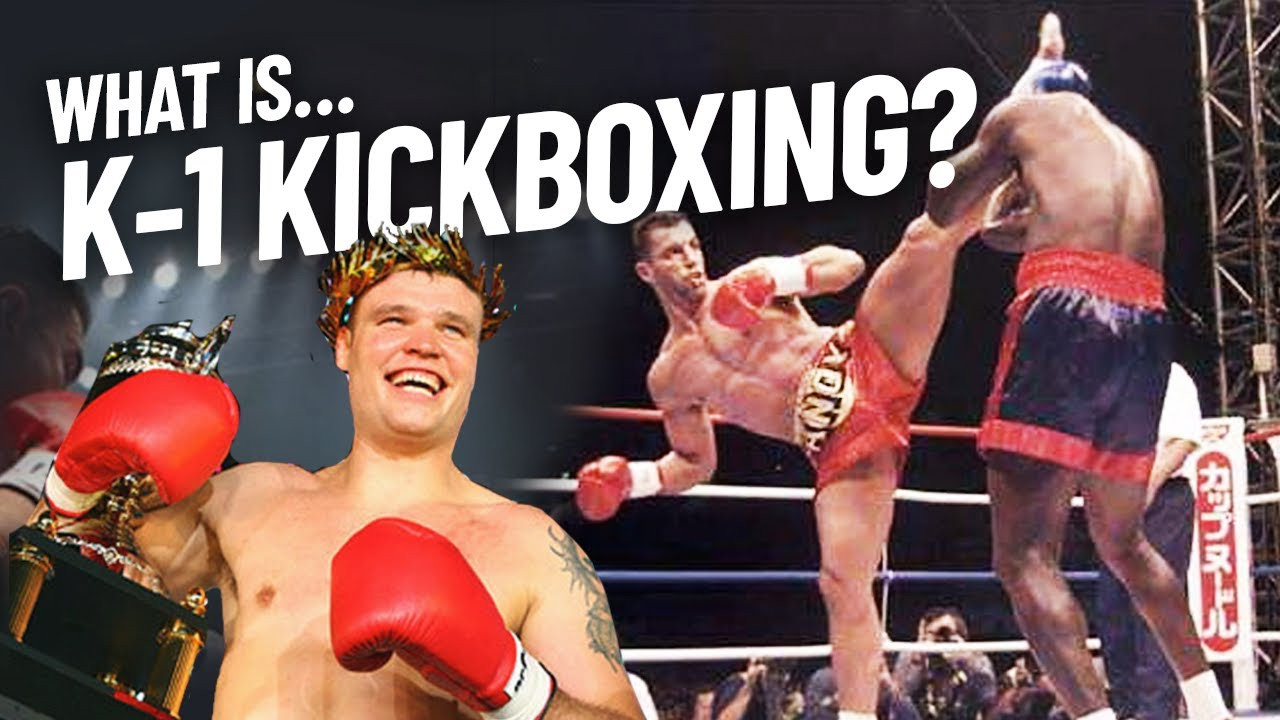What Is K-1 Kickboxing?

There are a variety of kickboxing styles in the world of martial arts. There’s Muay Thai, American kickboxing, and Japanese kickboxing, just to name the few that we’ve recently covered. The differences between them are subtle to the untrained eye, but there are several crucial distinctions, especially with respect to their rulesets.
Focusing on rules may sound kind of boring, but it’s important because fighters will internalize the ruleset of their given discipline. In other words, if someone is a top-tier Japanese kickboxer, where the use of elbows is prohibited, they may not know how to effectively use their elbows to strike and, more importantly, they may not be ready for an elbow strike if they find themselves in a fight with someone who practices Muay Thai, which permits elbows. Meanwhile, a Muay Thai fighter may find themselves completely caught off guard if they are taken to the mat by someone trained in jiu-jitsu because Muay Thai does focus on ground fighting.
While the Ultimate Fighting Championship tournaments of the early 1990s or the vale tudo matches of Brazil in the middle of the century tried to create a platform where there were virtually no rules to see which martial art was superior, K-1 kickboxing decided on a different route.
As Alby Tam of Combat Culture explains in the above video, K-1 kickboxing was a platform that allowed fighters with different backgrounds the opportunity to prove themselves against an opponent from a different discipline, but it kept in place many of the rules that are found in kickboxing. Most importantly, K-1 did not allow for ground fighting, which made the mixing of different martial arts very different from the mixing that was seen in organizations like the UFC.
It also made the fight dynamic very different. Because K-1 fighters remain on their feet for the duration of the rounds, there is a tendency for really big knockouts, especially in the heavyweight division. This led K-1 kickboxing to become a global phenomenon.
History of K-1 Kickboxing
K-1 Kickboxing was founded in the early 1990s by Kazuyoshi Ishii, who wanted to create a neutral space for all kickboxing styles to compete against one another. As a result, he organized and put on the first K-1 World Grand Prix in Tokyo in 1993. In addition to only allowing kickboxing styles, what made the competition so unique and successful was that the sixteen-man tournament occurred in a single night.
The winner of the first Grand Prix in 1993 was Branko Cikatić of Croatia, who won all of his rounds by knockout. Other winners of the Grand Prix include Remy Bonjasky, Peter Aerts, Andy Hug, Jerome Le Banner, Mirko Filipović, and Ernesto Hoost. These heavyweight fighters became some of the biggest celebrities within the world of combat sports during the 1990s and 2000s, and the Grand Prix helped catapult them into stardom.
Starting in 2002, the K-1 MAX World Tournament was introduced for middleweight fighters in the 70 kg class. Fighters like Masato, Artur Kyshenko, and Andy Souwer took part in these matches.
While the K-1 organization did experience some financial hardships starting in the 2010s and it has dipped in popularity, its influence remains evident to this day. K-1 is currently mounting a comeback and hopes to once again become the UFC of kickboxing.
Rules of K-1 Kickboxing
In K-1, all fights take place in a four-sided ring that looks very similar to an American boxing ring. Allowed strikes include punches to head and body; kicks to the head, body, and legs; and knees to the body and head. As noted above, ground fighting is not allowed. Other prohibited moves include elbows, sweeps, throws, takedowns, and submission holds. Fighters are allowed to actively clinch, but only for five seconds. Matches are decided by knockout, technical knockout, or decision.
The Influence of K-1
As noted above, K-1’s rule set was designed to create a level playing field for striking-focused arts, especially kickboxing. The organization no doubt accomplished this during the 1990s and early 2000s, when K-1 was at the height of its popularity.
K-1 remains important in the world of martial arts because it reshaped the way people approach combat sports. Its ruleset was adopted by a lot of organizations across the globe, and those who won or performed well in the Grand Prix gained a lot of clout in the world of kickboxing. Their styles ultimately influenced younger fighters at the time, and those fighters have grown into the stars of the 2020s.

